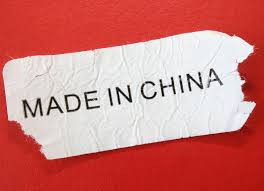
It seems like the reign of "Made in China" products are coming to a close. The once-mighty manufacturing industry in China is facing a significant downturn, with waves of factory closures spreading throughout the country. Capital flight is accelerating, and bankruptcies are being announced at an alarming rate.
Factories in the Pearl River Delta, which was once the heart of China's manufacturing sector, are shutting down one by one. The collapse of these factories has left countless workers jobless and disrupted supply chains. Some factory owners are fleeing, leaving behind unpaid wages and abandoned buildings that are slowly turning into ruins. The question on everyone's mind is: how can these owners live with their conscience?
The reality is that manufacturing has become a cutthroat industry. Even when factories have orders, profits are non-existent. The competition is fierce at every level—finding jobs, running factories, and even entering the job market, with another 14 million university graduates expected to join the workforce next year. Everything is being pushed to the limit, and in the end, no one is able to make a living.
In Xi’an alone, at least 1,000 denim factories have gone bankrupt this year. The entire manufacturing sector is now in a state where survival seems nearly impossible. This wave of business closures is not limited to small and medium-sized manufacturers; even industry giants are not spared. The number of bankrupt companies this year is terrifying.
Take Red Star Mine, for example. Their financial reports initially showed a profit of 4.5 billion yuan, but later they reported a loss of 1.2 billion yuan. If a corporate giant like this is losing so much, what does it mean for the rest of the market? Another example is Euan Furniture, which recently declared bankruptcy. Many distributors have millions worth of products still undelivered, and even pre-ordered goods remain unfinished. Their Taobao stores and TikTok accounts have also been deleted, signalling a total shutdown.
Many once-thriving factories now stand completely deserted. Some have been forced to sell off their equipment to pay outstanding wages. Even with equipment being sold at rock-bottom prices, buyers are scarce. Rows and rows of machines, investments worth tens of millions, now stand abandoned. Factory owners are forced to sell everything they own. These machines, which belong to the same high-end batch with top-tier configurations, are now gathering dust. But who dares to invest in a factory now?
Every day, factories are shutting down one after another. China, once known as the world's factory, is now losing its dominance in global manufacturing orders. In contrast, emerging manufacturing powerhouses like Vietnam and India are rapidly rising. A massive wave of orders is shifting from China to Southeast Asia.
In the past, international shoppers would see shelves filled with products labelled "Made in China." But now, Chinese products are becoming less visible in international markets. Many factory owners are blamed for being greedy, but in reality, they are just as lost and struggling. They have sold their houses, cars, and maxed out their credit cards, yet their factories still have no orders.
- The brains behind Matavire’s immortalisation
- Red Cross work remembered
- All set for inaugural job fair
- Community trailblazers: Dr Guramatunhu: A hard-driving achiever yearning for better Zim
Keep Reading
On January 27th, China's National Bureau of Statistics reported that the Purchasing Managers' Index (PMI) for the manufacturing sector dropped to 49.1, signalling an economic contraction. This marks the end of economic expansion. What's even more alarming is that industrial profits have declined for four consecutive months. Overcapacity in steel, photovoltaics, and petrochemicals, combined with weak demand and plummeting prices, has left businesses on the brink of survival.
It's not just manufacturing that is suffering through a brutal winter. The restaurant industry is also experiencing an unprecedented collapse. From major brands to small local eateries, a large number of restaurant businesses are facing cash flow crises. The real horror is not just the business closures but that even after two years, these locations still remain empty with no new businesses taking over.
How is business after New Year's Day? For many, it's so bad that they don't even want to talk about it. The New Year holiday wasn't particularly busy, but after that, it completely collapsed. It's not just small restaurants that are struggling; even top-tier restaurant brands in Chongqing, including large hot pot chains, are struggling to survive. Many big names are now selling their businesses, unable to hold on any longer. The glory of the past is gone.How long will this winter of manufacturing and business last? Does China's manufacturing industry still have a chance for revival? Is this economic downturn just a temporary setback, or is it a complete restructuring of the industrial landscape? (Vaishali Basu Sharma)







